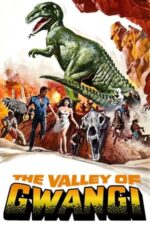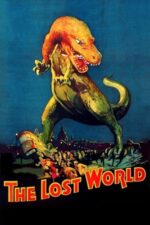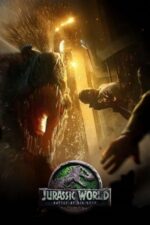Roar! Prehistoric Predators on Screen: More Than Just Monsters
Okay, so "allosaurus" might seem like a niche topic for a film discussion – it's not exactly Casablanca, right? But thinking about films featuring these (and other prehistoric) creatures actually opens up a fascinating window into how we’ve imagined our relationship with nature, technology, and even ourselves over the decades. It's surprisingly rich!
For a long time, dinosaurs on screen were pure spectacle – think of The Beast of Hollow Mountain. That film, with its cowboy facing off against a giant lizard in the Mexican wilderness, is wonderfully cheesy but also speaks to an older fascination: the idea that monstrous creatures still lurk just beyond the edges of civilization. It’s a primal fear, amplified by the exotic setting and the “us vs. them” dynamic. It's pure adventure pulp!
Then you get films like The Lost World, which attempts something more ambitious. While it delivers on the thrills – who doesn’t love seeing dinosaurs rampage? – it also taps into a sense of wonder, that feeling of discovering a lost world untouched by time. It’s about exploration and the humbling realization of how small we are in the grand scheme of things. It's interesting to see how this concept evolved from Doyle’s original novel; the visual representation really shapes our understanding.
What I find particularly compelling is how these films often reflect anxieties of their era. The Valley of Gwangi, for example, with its traveling circus exploiting a captured dinosaur, feels like a commentary on commercialism and the exploitation of nature – themes that resonate even more strongly today. It’s almost satirical in its depiction of human greed versus the raw power of the natural world.
And then there's Battle at Big Rock. This one really struck me with how it reframes the "monster" narrative. It's not about conquering a beast, but about survival and protecting family against an unpredictable force. The allosaurus isn’t inherently evil; it’s just…there, existing in its environment. The film subtly shifts our perspective – we’re seeing things from the family’s point of view, making them vulnerable and relatable.
Finally, A Sound of Thunder, with its time travel twist, really pushes the concept to a philosophical extreme. The idea that even the smallest action in the past can have catastrophic consequences is a powerful one, and it's brilliantly visualized through the allosaurus’s presence – a tangible representation of disrupted history.
So, next time you’re looking for something a little different, give one of these films a watch. They’re not just about dinosaurs; they're about us, our fears, our ambitions, and our place in a world that’s far older and more powerful than we often acknowledge. And who knows? You might even learn a thing or two about allosaurs along the way!
























